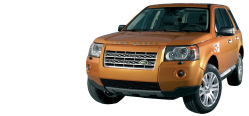
|
|
| Home · FAQ · New Posts · My Posts · PMs · Search · Members · Members Map · Calendar · Profile · Donate · Register · Log In |
 | Home > Maintenance & Modifications > Haldex service..Yes/No? |
 
|
|
|
| IanMetro Member Since: 11 Sep 2017 Location: Somerset BS21 Posts: 3262  
|
Link seems to work for me, but there are other videos etc which will explain Haldex action via Google. In a Freelander 2, the main difference between a Haldex Generation 3 and a Generation 4 system is that the Gen 4 is considered more proactive, meaning it can pre-tension the clutch and engage all-wheel drive before wheel slip occurs, while the Gen 3 relies more on detecting wheel slip to activate the rear wheels, making for a slightly faster response time with the newer version; essentially, the Gen 4 has improved electronics and can anticipate the need for AWD more effectively than the Gen 3. Key points about the difference: Proactive vs. Reactive: Gen 4 Haldex is considered "proactive" as it uses data from the ABS and engine ECU to pre-tension the clutch, while Gen 3 is more "reactive" and primarily activates when wheel slip is detected. Pump design: Gen 4 may not have a mechanical pump like the Gen 3, relying instead on an electronically controlled pump for clutch activation. Application in Freelander 2: Earlier model Freelander 2s likely have the Gen 3 Haldex, while later models will have the Gen 4 system. FL2 XS SD4 Auto 2010 2012-2017 (21k - 91k miles) (MY2011) FL2 Metropolis SD4 Auto 2014 2017- (16k - 82k+ miles) (MY2015) Metro in its 11th Year of (Extended) LR Warranty / Full LR Service History (Expensive, but Trouble/Worry free - hopefully?) |
||
|
| IanMetro Member Since: 11 Sep 2017 Location: Somerset BS21 Posts: 3262  
|
Found it --- Link to original thread about Haldex ---
|
||
|
| trw999 Member Since: 04 Oct 2021 Location: Essex/Herts Border Posts: 106  
|
I made a note of this general info on Haldex III a couple of years ago. The first gen FL2s had the III.
|
||
|
| trw999 Member Since: 04 Oct 2021 Location: Essex/Herts Border Posts: 106  
|
[quote="jules"]
Jules, surely our experience should include an idea of the type of driving we do in our FL2? If one spends half the time on country roads and the other half delivering feed to the middle of several fields, in all weather, then I would imagine the filters would become clogged more rapidly than if we spend the majority of time on the (gloriously potholed) roads of GB. Tim Freelander 2 HSE i6 Stornoway Grey with Alpaca & Tundra interior Driven many miles in: 2 FL2s 1 Range Rover P38 4 Range Rover Classics Many military LWB & 1/2 ton Lightweight Series IIA & III |
||
|
| BossBob Member Since: 30 Sep 2010 Location: Bristol Posts: 1458  
|
It’s going to depend on the kind of driving. If you are wafting along on a clear A road or quiet motorway you’ll be in 2WD for the majority of any journey. On the other hand, if you are driving in our traffic choked cities and towns and subject to 20mph speed limits then the Haldex is going to get a severe workout as it constantly goes in and out of 4WD! |
||
|
 
|
|
| All times are GMT + 1 Hour |
< Previous Topic | Next Topic > |
Posting Rules
|
Site Copyright © 2006-2025 Futuranet Ltd & Martin Lewis
![]()



